For the last 23 years, Wilfred and Jeannette Cass have dedicated their time and resources to outdoor sculpture. Keen to encourage ambition in both young and established artists, they have commissioned over 400 monumental works from over 200 artists, from Anthony Caro to Rachel Whiteread, which they have then displayed in the gentle woodland surrounding their home on the South Downs at Goodwood. The model has been to sell the pieces, on a non-profit basis, to support yet more commissions. Intrinsic to the whole process has been the quiet sojourn of these varied sculptures among these particular ancient trees, in this 26-acre pocket of forgotten England, overlooking the farmland that gives way to the south coast. The dialogue between landscape and the art has been essential both to the works’ conception and to their presentation. Commissioned artists are invited down to Cass to absorb something of the unique spirit of the place.
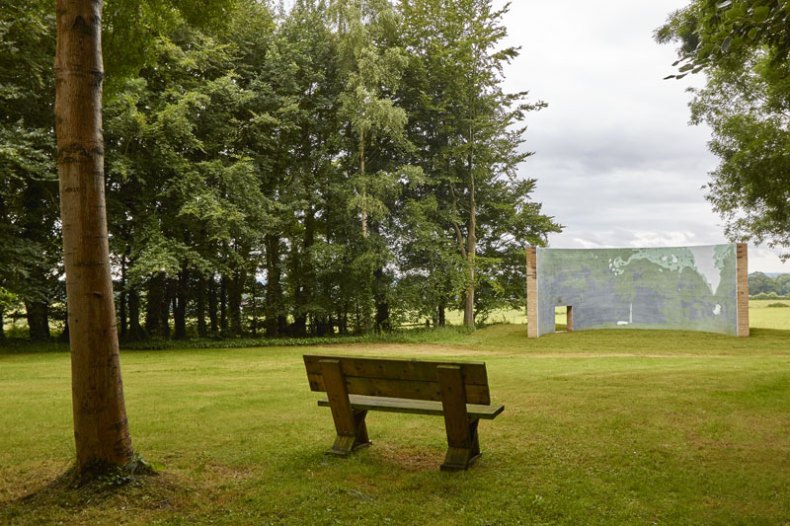
Panorama 2 (2016), Wang Wei. Photo: Barney Hindle, 2016 © Cass Sculpture Foundation
Until now the Foundation has worked almost exclusively with British artists. This year, the organisation has taken the bold step of collaborating with curators Ella Liao and Wenny Teo to invite 18 contemporary artists from greater China to make work and exhibit here. It is an extraordinary departure – one driven by the recognition of the rising influence of Chinese artists and Chinese collectors, but also perhaps by a desire to shake up the image of this worthy institution and reassert the radicalism of the founders’ original vision. The artists range from the internationally recognised Cao Fei, Jennifer Wen Ma and Xu Zhen to rising young sculptors Lu Pingyuan, Zhang Ruyi and Song Ta. They have been selected to represent the dynamism and variety of contemporary sculptural practice throughout China – in Shanghai, Beijing, Dongguan, Taipei. As a starting point the curators suggested the historical relationship between Chinese and English landscape aesthetics. The 18th-century English taste for naturalistic, free-flowing landscapes, they suggest, had its origins in Jesuit reports of the ‘beautiful disorder’ of Chinese gardens. More particularly, Chinese landscape aesthetics involved the juxtaposition of controlled theatrical framing devices with wild nature seen beyond: all intended to provoke a pleasing contrast of emotions.
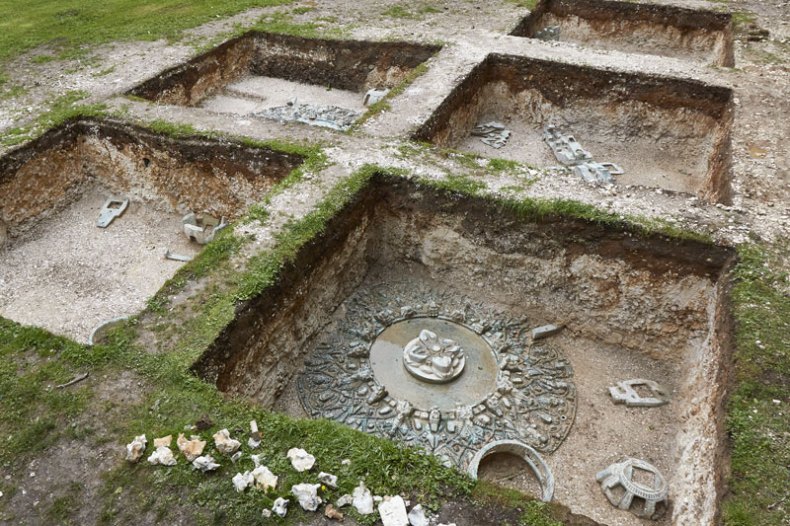
Bu Num Civilisation Wheel (2016), Tu Wei-Cheng. Photo: Barney Hindle, 2016 © Cass Sculpture Foundation
For these contemporary sculptors, it is the idea of framing and indeed entire scene-setting that has taken hold. Rather than simply accepting their surroundings, these works wrestle them into meaning. So Wang Wei offers Panorama 2, a concrete and mosaic tiled curved wall decorated with a schematic depiction of trees and grass, placed directly in front of a wide view across the English landscape. The wall replicates the architectural enclosures in Beijing Zoo (complete with openings for the animals to enter through), onto which detailed panoramas of the original habitats are painted for human interest rather than the needs of the creatures themselves. We are required to think about our own enclosure in a constructed world.
A few steps further into the wood are five large square holes dug into the ground; excavation sites as for an archaeological dig. A worker is carefully brushing away mud from bronze circles covered in iconographic motifs from what appears to be a technologically advanced internet culture. Tu Wei-Cheng’s Bu Num Civilisation Wheel throws us into a future age where our descendants may come across the inscrutable remnants of our digital civilisation.
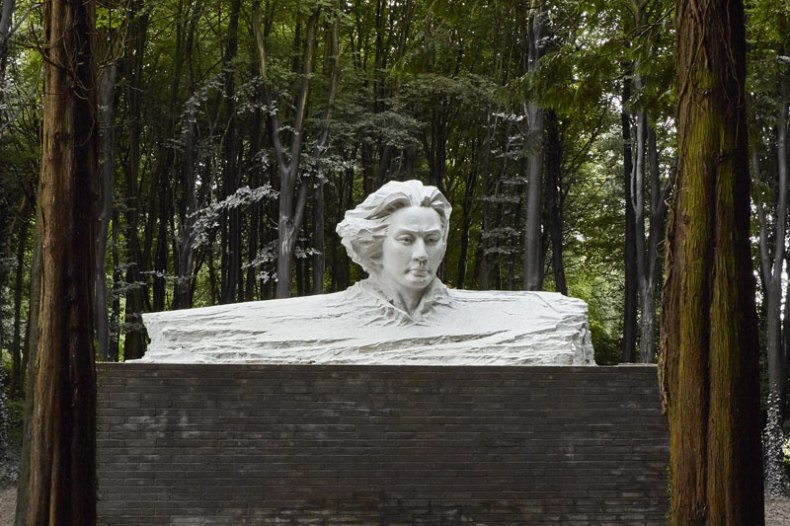
Why do they never take colour photos? (2016), Song Ta. Photo: Barney Hindle, 2016 © Cass Sculpture Foundation
Song Ta, meanwhile, has transported a concrete-coloured sculpture of a young Mao (his hair romantically buffeted by wind and inspiration) to this muddy corner of West Sussex, and then sprayed the surrounding trees and grass a similar grey. The piece conveys the strangely fictional distance into which Mao has receded for Song Ta’s generation while still exerting a profound impact on their lives. For Ghost Trap, Lu Pingyuan has positioned a rusted, apparently abandoned car among the woodland brambles and set it alongside a large rock inscribed with an uncanny story of a young man lost in the Foundation grounds, confusing our understanding of time and place. Meanwhile Li Jinghu has set up two opposing chain-link border fences, with searchlights crisscrossing the no-man’s land in between, to draw attention to the stateless who also live suspended between realities.
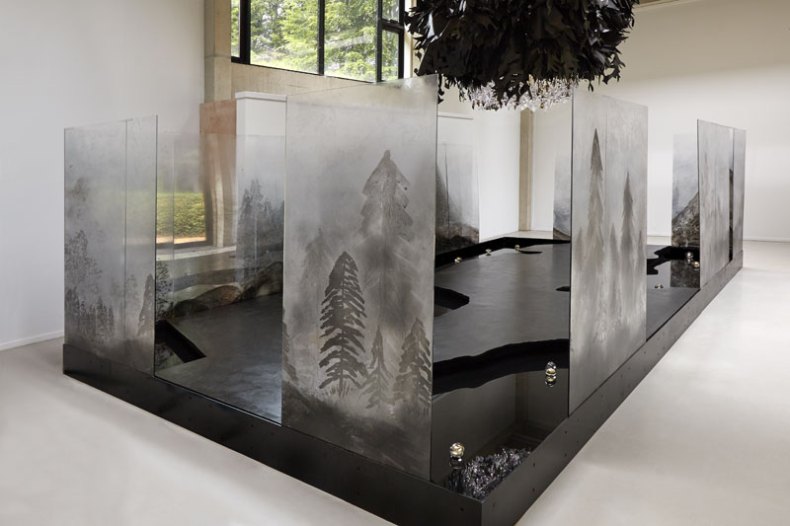
Molar (2016), Jennifer Wen Ma. Photo: Barney Hindle, 2016 © Cass Sculpture Foundation
Interventions are scaled from an immersive installation inside the Foundation’s main gallery (Molar, in which Jennifer Wen Ma, a key orchestrator of the Beijing Olympics ceremonies, has recreated a mythological garden in black and white, with pools of Chinese ink and clear glass fruits dripping from a tree made of black Tyvek), to the simple cement casts of electrical power sockets which Zhang Ruyi has placed with imaginative economy in the trunks of trees throughout the grounds. Perhaps the most startling single work is Wang Yuyang’s Identity, a six metre tall monument constructed from layered brass, iron, copper, stainless steel, concrete, fiberglass and marble – an alien presence in this English wood. Its design was arrived at by translating Karl Marx’s Das Kapital into binary code, which subsequently determined the materials and their arrangement according to an arcane digital recipe.
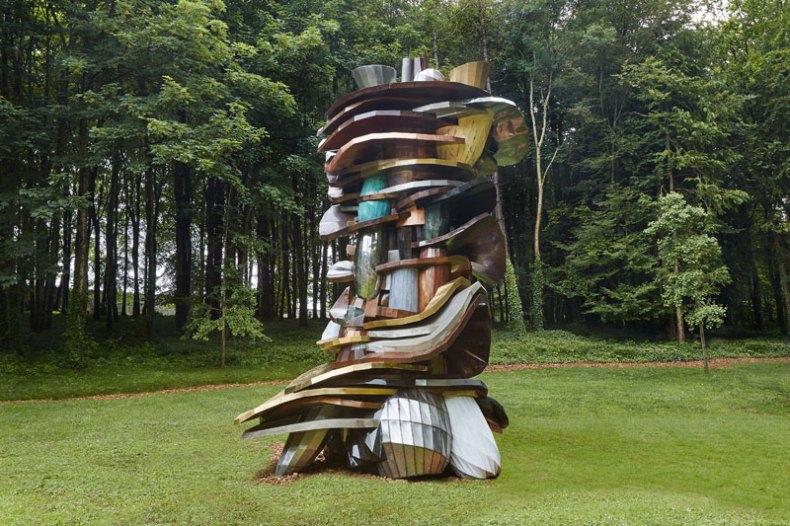
Identity (2016), Wang Yuyang. Photo: Barney Hindle, 2016 © Cass Sculpture Foundation
In such strange ways are all our lives – seemingly the different spontaneous expressions of nature – governed by dead men’s ideas.
‘A Beautiful Disorder’ is at the Cass Sculpture Foundation, Goodwood, until 6 November.
Unlimited access from just $16 every 3 months
Subscribe to get unlimited and exclusive access to the top art stories, interviews and exhibition reviews.

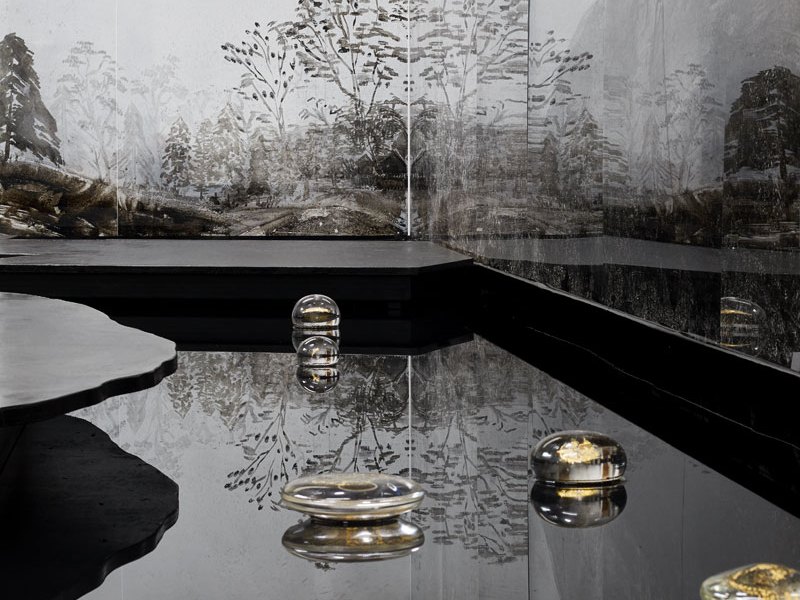

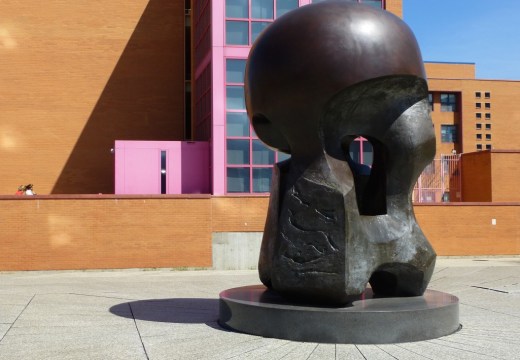
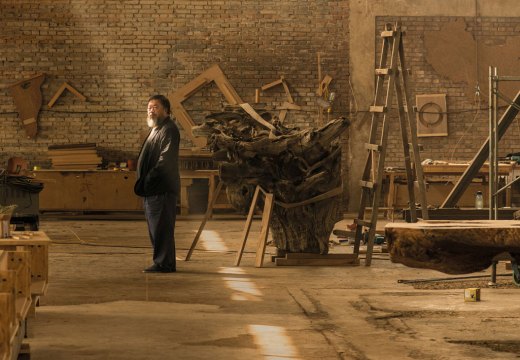









![Masterpiece [Re]discovery 2022. Photo: Ben Fisher Photography, courtesy of Masterpiece London](http://www.apollo-magazine.com/wp-content/uploads/2022/07/MPL2022_4263.jpg)
It’s time for the government of London to return to its rightful home